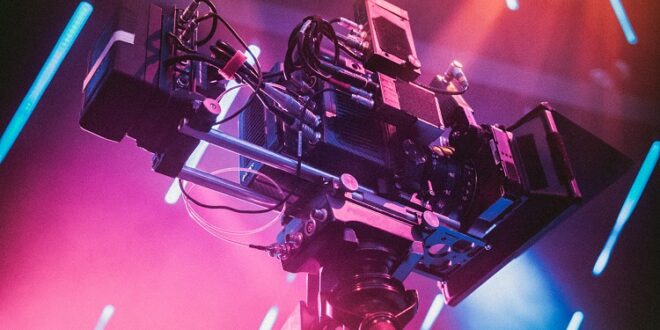The correct choice of filming lights and Stage Rental is necessary to set the mood and tone of each movie scene. However, it can be a challenging task to find the perfect lighting kit to use on your project. Film lights come in different types and configurations, which can be intimidating for a beginner filmmaker.
If you’re looking for the best film lighting options, you’re at the right post. Below, we discussed the common types of lights used in films and how they work.
1. HMI lights
HMI (Hydrargyrum medium-arc diode) lighting is crucial for outdoor movie locations. This lighting equipment can also replicate natural outdoor light in an interior setting.
Due to their powerful illumination, HMIs are ideally used as key lights for large movie sets. Also, it doesn’t generate too much heat even if used for continuous lighting. These lights can run for hours without getting busted.
On the downside, HMIs can be pretty expensive. It also requires a more intensive setup and certified personnel is necessary to operate the equipment. With this, HMI lighting is not common for low-budget films.
Aside from that, HMI movie lights are power-hungry. In most cases, this will require generators or specialized power sources to run for long periods. Still, it’s not as demanding as tungsten lights, which we discussed below.
2. Tungsten lights
Tungsten lighting is a traditional and proven choice for filmmaking. They are great as indoor video lighting since it’s quite similar to incandescent filament bulbs.
Aside from that, tungsten film lights have a well-balanced Color Rendering Index (CRI). This allows the lights to emit a color that produces the true visual quality of an object.
However, tungsten lights get extremely hot when used for extended periods. Due to this, the bulbs require frequent replacements, though it’s quite cheap and still suitable for budget films.
Moreover, tungsten lights require careful handling as they could explode or start a fire if used improperly. If possible, look for tungsten lights with protective covers. This will prevent injuries should the bulbs explode in the middle of shooting a scene.
3. Fluorescent lights
Fluorescent lighting is a household item, which makes it easier to spot on a movie set. It’s also a pocket-friendly option for low-budget productions.
Moreover, fluorescent lights can be used as a part of 3-point lighting setups. It is a soft light with naturally diffused rays, suitable for interior settings. Aside from that, it’s affordable and doesn’t require intensive maintenance.
However, fluorescent film lighting still requires extra time for assembly and dismantling. Also, you may need external ballasts if you’re having flickering issues with the lights.
Aside from that, dimming isn’t easy with fluorescent lights. It doesn’t offer much control over HMIs or LEDs. In the end, the best way to reduce the intensity of these lights is to remove one or two bulbs.
4. LED lights
LED lights are the latest craze in budget films due to their low price, easy availability, and flexibility. LED panels can be easily adjusted using a remote control. Also, it’s lightweight and easy to move around the movie set.
When it comes to dimming, LED lights are a champ. It allows lighting directors to adjust the brightness and intensity without losing its color integrity.
Aside from that, there are battery-powered LED lights, perfect for easy transportation and assembly. Above all, LED lights don’t get hot and they can run for thousands of hours without needing replacements.
If there’s one downside to LED lights, it’s the inconsistency of white panels. You may need to test a few to find the one that suits your scenes.
5. Natural light
While this is not necessarily a piece of equipment, natural light sources are indispensable for movie making. It’s free and delivers the most realistic results with minimal effort.
However, filmmakers have to pick the right camera lens to maximize natural lighting. Also, this light source offers no control since it depends on the weather and time of day.
Aside from that, a lot of preparation is necessary to ensure that you capture the right natural lighting for a scene. A good example here is the ‘A Lovely Night’ scene in the movie La La Land. The crew had to shoot it for many days to get the perfect light timing at Cathy’s Corner in Mt. Hollywood Drive.
Professional film lighting made easy!
Film lighting is an art every filmmaker has to master. Still, they don’t have to go through the craft alone. Audiovisual production companies like Rent For Event offer a helping hand by providing professional-quality lighting equipment.
We have worked with some of the biggest studios, including CBS, BET TV, and Peacock TV. We offer full-service lighting solutions for all events and applications.
Whether you’re shooting a music video, movie, commercial, TV series, and so on, we have the right lighting solutions. Our elite team will handle everything from delivery to breakdown for hassle-free movie production.
 HammBurg Be informed with latest news, reviews, entertainment, lifestyle tips, and much more.
HammBurg Be informed with latest news, reviews, entertainment, lifestyle tips, and much more.




